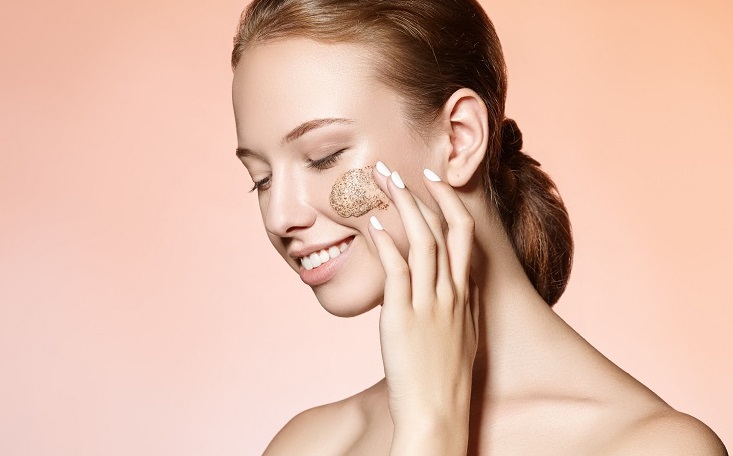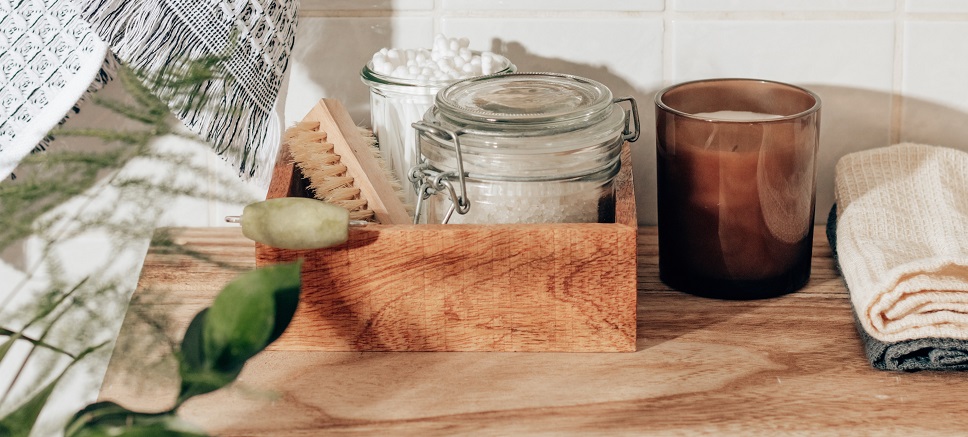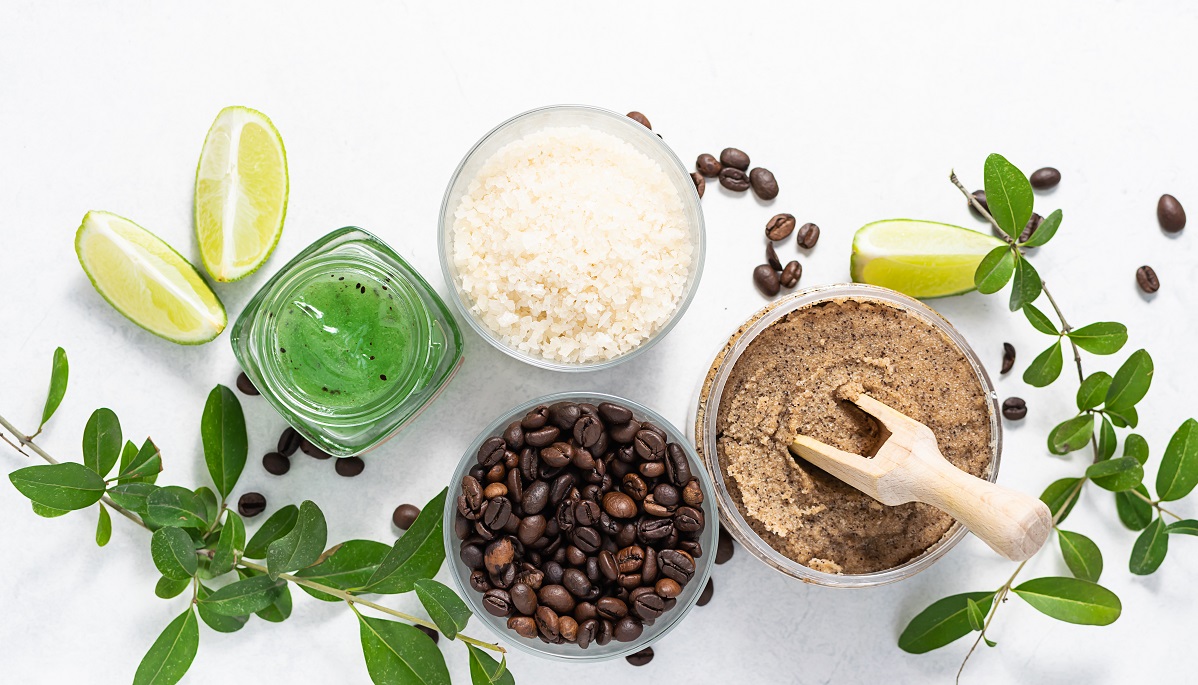Uncategorized
TO REFRESH, NEVER FORGET TO EXFOLIATE YOUR SKIN
Without doubt, Facial Exfoliation is an indispensable step in women’s skin care routine. In other ways, our skin always needs to stay fresh and healthy and that is the main function of exfoliation.

(Exfoliate periodically to keep you young and beautiful)
That is the most basic step in preventing the aging process on your skin. Let’s find out what you have missed!
1. Why does facial skin need to be exfoliated?
In fact, the skin’s surface is covered with a layer of horny cells. After a 28-day cycle for normal skin, the keratinocytes peel off and they would be replaced by a new cell layer. The cells that do not get off the skin’s surface are called dead skin cells.
The skin renewal cycle can take place naturally, but due to many factors such as weather, age, habitat, air pollution, lack of nutrients,… make it slower. Consequently, the skin is clogged with dead cells and dirt. This is the good conditions for acne bacteria to develop, and also sebum to accumulate in the pores. Therefore, regular exfoliation is essential to maintain healthy skin.

(Exfoliate to remove dead skin, dirt, excess oil,… on the skin)
Facial exfoliation has many effects as follows:
- Removes dead skin layers, dirt, excess oil,… on the skin.
- Reduces acne.
- Reduces clogged pores, thereby reducing the amount of oil on the face.
- Helps skin absorb nutrients better, optimize the effectiveness of skin care.
2. How many types of exfoliation? In which step of the skin care routine to use?
Exfoliation products are divided into two basic categories: physical exfoliation and chemical exfoliation.
Physical exfoliation
Physical exfoliation uses the compressive and frictional forces of specialized products, or self-made products to peel dead skin on the surface. Metallic crystals, silica or crystalline elements that are friendly to the skin are often used in products of this type. Actuation force should be adjusted to fit with each skin type, avoiding the risk of skin irritation.
Exfoliate by physical method used after removing make up layer and cleansing step, take a small amount (about half to 1 knuckle for the whole face), gently massage for a few minutes to let dead cells peel off, then rinse with water. For a week, remember to use about 1 or 2 times and only at night.
Chemical exfoliation
Chemical exfoliation based on the action of AHAs and BHAs softens the adhesion of dead cells to each other and to the new skin underneath.
This method not only helps to remove dead cells, but also minimizes blackheads, whiteheads, and excessive sebum production of the skin. Chemical exfoliation has the ability to act deeply and bring optimal results compared to physical methods.
After cleansing, use toner to balance the skin’s pH, take a pea-sized chemical exfoliant, rub it all over the face, wait for about 20-30 minutes then continue with the rest of the skin care steps. Remember not to rinse with water.
3. Choose the right exfoliator for each skin type
Choosing to exfoliate dead skin cells affects the effectiveness of skin care and skin health with long-term use. Find your skin type to choose the most suitable and effective products.
DRY SKIN
When choosing an exfoliator for dry skin, prioritize those that provide moisture. Using a physical exfoliant that contains natural jojoba oil or a moisturizing product like AHA’s are great to your skin.
COMBINATION SKIN
Combination skin can have excessively stretched pores, greasy skin and blackheads in the T-zone, or along the center of the face and forehead, sometimes dry on the cheeks. To deal with this type of skin, you should have on hand both strong and mild exfoliators. Depending on the weather, combination skin will be more oily or more dry, and so choose the right one for that period.
SENSITIVE SKIN
Exfoliation products with gentle ingredients extracted from nature such as chamomile, aloe,… should be given priority, avoid using products containing fragrances. The best solution is to choose a chemical exfoliator containing Lactic Acid because of its superior moisturizing and hydrating ability compared to other acids. Note to use up to 2 times per week and to test the product on hand before applying to the face in case any skin irritation.
SKIN WITH ACNE PROBLEMS
Unlike normal skin, with acne skin you should only conduct exfoliation once you have checked the skin condition and acne condition on the skin. For acne skin with basic problems such as blackheads, whiteheads, or hidden pimples, use ingredients with charcoal to remove sebum, or contain salicylic acid to help clean holes pores.
As for other cases such as acne skin with inflammation, swelling, redness, pus covered, absolutely should not perform exfoliation for the skin. At this time, the skin is severely damaged, exfoliating the oily skin of acne will have many risks of causing inflammation.
4. The difference between Exfoliation and Peeling.
Peeling means peeling off the old layers of skin, epidermis to push away the dirt, sebum on the skin.

(Peeling cleans both above and below the skin’s surface)
Peeling is a method of applying active chemicals to remove stubborn dead skin and regenerate a new, healthier skin layer. Although it also has the ability to exfoliate, there are many differences as follows:
| Type | Exfoliation | Peeling |
| Structure | Natural vegetable seeds, silicone fibers or chemically active substances | Gel, mask or patch form |
| Mechanism of action | – Friction on the skin to wash away dirt, dead cells on the skin surface – Or the deep action sloughs the dead skin cells inside the pores |
– Create adhesion between dead cells, acne bran, dirt, excess oil inside the pores. |
| Results | Skin is smooth, airy, and can be a bit tight | Facial skin is much lighter due to its deep cleansing action |
| Skin type for usage | There are 2 main types: physical and chemical exfoliation which can be used for all skin types | Skin with many acne, dark spots, dullness, fine wrinkles,… for skin that wants to improve significantly and quickly. |
| Safety level | – Depends on product selection and frequency of use – May cause damage to the skin due to the angular grain |
– Depending on the concentration and texture of the product.
– Ensure safety with natural forward-acting mechanisms, consistent with skin physiology. |
| Efficiency | – The cleaning effect depends on the product type and the brand
– Average / good |
– Deep cleansing action both above and below the skin surface. – Contains ingredients to enhance the nourishment and regeneration of new skin cells. |
| Defect | – Failure to understand skin type and skin condition leads to wrong choice of products that make skin worse | – The price is quite high – Need an appointment from an expert / doctor – Do not use it at home on your own – Do not use excessively it because it will affect skin health |
5. Pay attention to following skin reactions when exfoliating
Improper or excessive exfoliation can all cause the skin to have undesirable reactions such as redness, itching, irritation, inflammation, dryness, flaking, excessive oiling, pimples,… In this case, we should stop exfoliation until the skin is completely healed while focusing on soothing and protective measures to accelerate the healing process.

(For youthful skin, exfoliation cannot be skipped)
Exfoliation is an extremely important step in skin care to keep skin young and beautiful. Understand your skin type and also skin condition to choose the most suitable and effective exfoliating products. Wish you have gorgeous skin!












